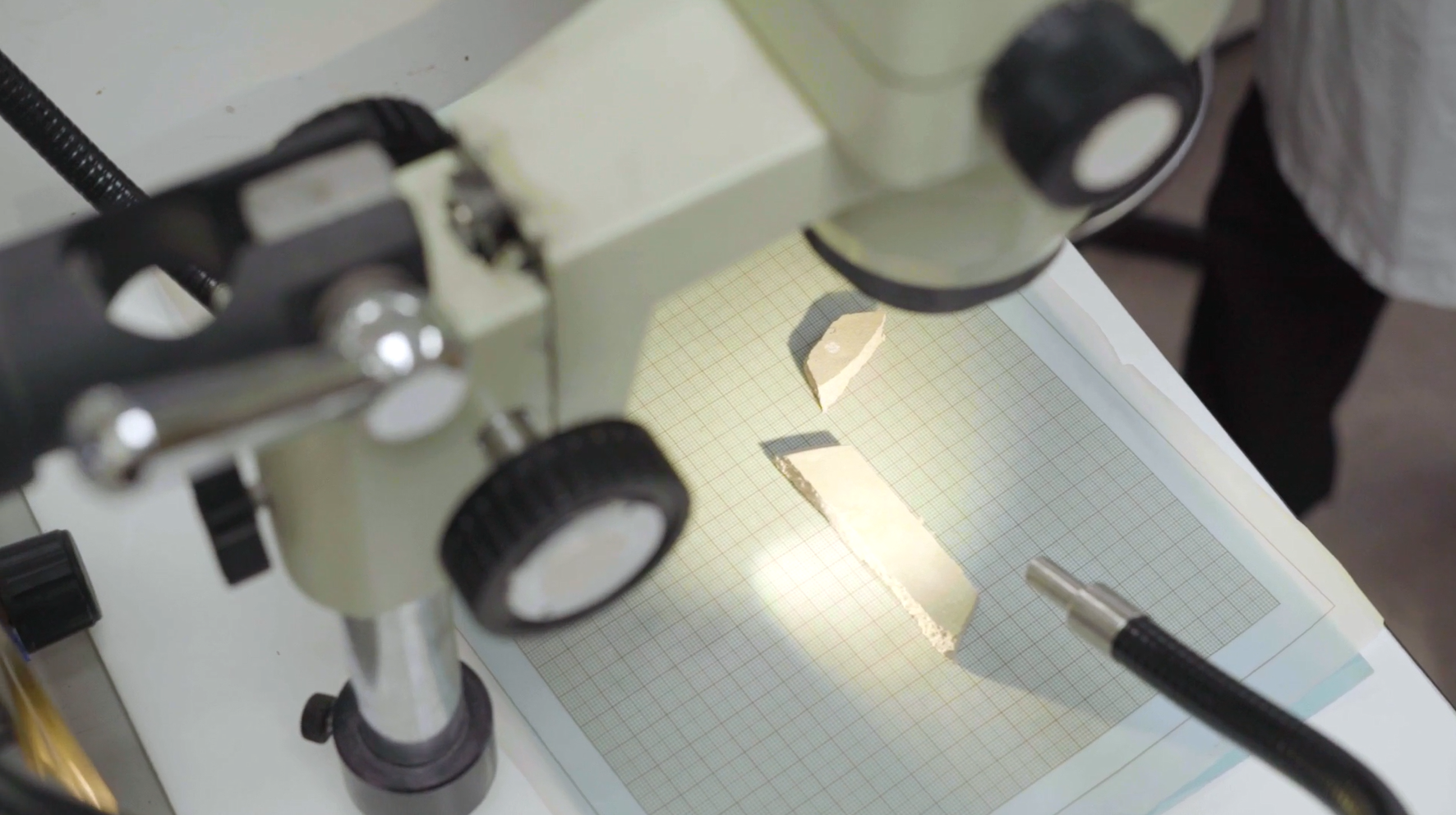Think Technical Services and you might picture a team on site, working with customers on their projects, tackling technical troubles, whether it be assessing surface regularity or performing in-depth moisture testing. That’s the front line, sure, but there’s so much more to the job that we rarely, if ever, get to see. Behind every well-performing product or system, there’s a bunch of work that goes on in the background.
In this article, I want to take you on a behind-the-scenes tour of some of the lesser-known work that the Technical Services teams look after, explaining how they put the products we provide through their paces and ensure they perform not only the best they can but also as they say they can.
Benchmarking is a critical process for so many elements of flooring products, whether adhesives, smoothing compounds, DPMs or primers. Benchmarking may be undertaken against competitor products to see how performance levels compare. It may also be undertaken when a new product is being developed. Then, several different formulations are tested to see which one performs most favourably. Either way, benchmarking is a critical process to understand the characteristics of a product and how it compares to others. It involves not only technical performance levels but also an assessment of the actual application – how it feels, flows, spreads, etc.
Having developed a new product and selected the preferred formulation, it is time to scale things up by undertaking large-scale applications. Sites and projects are selected, and large areas will receive an application of the product. These will be constantly assessed throughout, maybe even filmed, and once completed, they will receive regular visits and assessments to ensure that the long-term performance is as it should be.
Now, we will move into a more defined field – testing products to clearly defined standards. Products we make must be tested in certain ways to ensure they meet the minimum performance criteria required. There certainly are many of these, but the ones we are involved in are usually quite specific and involve bespoke testing equipment.
Flexural and compressive strength. For us, these always relate to smoothing compounds. This information is critical and is always incorporated into technical data sheets. The information is used in several ways. The test process is relatively straightforward. Multiple prisms of the chosen product are cast to precise dimensions in moulds and then are left for a determined period. Once this period of time has elapsed, the prisms are subjected to testing. The results of these tests are processed, and the resultant measurement is either recorded as a ‘C’ number for compressive strength (usually within the range C15 – C40) or as an F number for flexural strength (usually within the range F5 – F10).
When assessing the performance of flooring adhesives, peel and shear tests are perhaps the two most important tests of all. Peel testing is how much effort is needed to peel the flooring away once bonded, whereas shear testing is how much effort is required to pull the products apart laterally (a bit like a tug-of-war between the substrate and the floor covering). The tests are done over multiple samples, and after determining which results are valid, the mean average of the remaining results is calculated. The average reading is then converted into a N/mm2 result. Again, there is a clearly defined score which is used to give a pass or fail. The flooring type used in these tests is of great importance. This is how we build adhesive recommendations, by testing several products from a manufacturer with several adhesives from our range and several samples of each combination – making for quite a lengthy but thorough preparation process. Surprisingly, there are also three different types of each test! Generally, only two of these tests are undertaken, with the third test being undertaken if incompatibility between the products is suspected. Of the two obligatory tests, one is a control test, and the other involves heat ageing to simulate performance after one year.
Although we do not do the actual testing in this particular instance, we are also responsible for ensuring our products are certified Indoor Air Comfort Gold, frequently referred to as EC1 or EC1 PLUS, and ensuring that the certification remains valid. In an industry that’s increasingly concerned about the effects that materials might have within the built environment, ensuring all our products are tested and certified is incredibly important. Building requirements such as LEED and BREEAM require high standards when it comes to indoor air quality, and not having the required levels of certification could, effectively, mean that products cannot be used in buildings. It is not necessarily that the products do not perform well enough; it is the ability to prove they do that is so important these days.
There are many other ways in which we test; some follow official testing standards, while others are developed ‘in-house’ by us to assure ourselves that the products and systems we use will perform over and above the expected standards.
As you can see, there is a lot we can do, and we can do this for you, your project and your product. But what is important is that we are here to help and support all our customers, users and complementary manufacturers. We are here to provide professional services to ensure that every project and every installation has the best possible opportunity to be long-lasting, integral and problem-free.
Written by Steve Thornton

